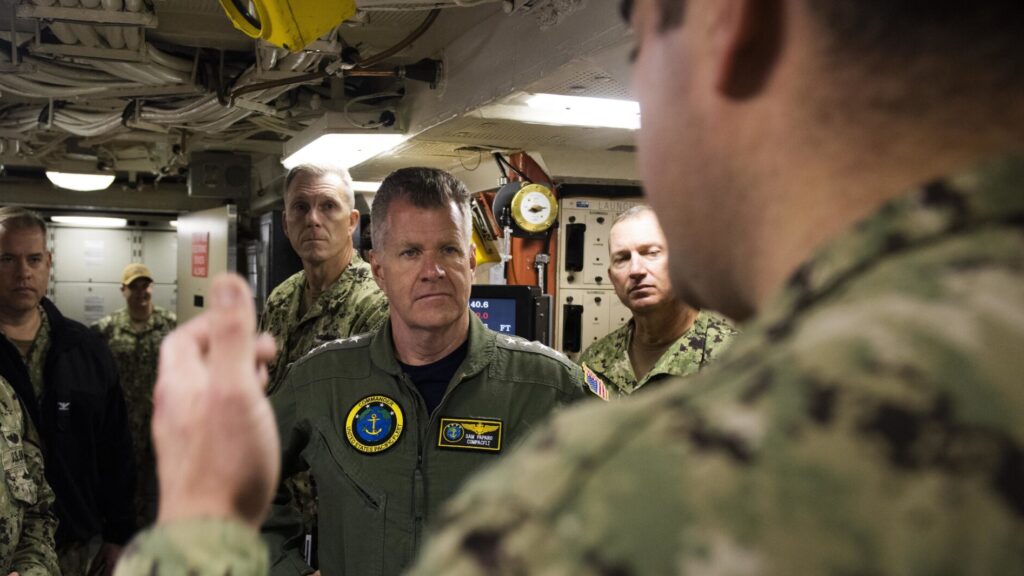Admiral Samuel Paparo, the leader of the U.S. Pacific Fleet, received a guided tour of the USS Henry M. Jackson (SSBN 730), a ballistic missile submarine, during his visit to Naval Base Kitsap (NBK)-Bangor, Washington on June 9, 2022. Mass Communication Specialist 1st Class Brian G. Reynolds from the U.S. Navy captured the visit in a photograph.
Recent months have witnessed significant escalations in Chinese military operations in the Asia-Pacific region. These escalations encompass various activities such as frequent flights of Chinese warplanes over the Taiwan Strait, the presence of more than a hundred quasi-civilian Maritime Militia vessels in Philippine waters, clashes between the Chinese Coast Guard and Filipino forces, and extensive wargames orchestrated by China’s inaugural domestically constructed aircraft carrier, escorted by a flotilla of warships. These developments have sparked concerns regarding heightened tensions and the necessity for advanced intelligence analysis to distinguish routine maritime activities from potential strategic threats.
Admiral Paparo stressed the significance of utilizing artificial intelligence (AI) technology to bolster intelligence analysis capacities in response to evolving security challenges in the region. He highlighted the imperative for the American industry to devise sophisticated analytic algorithms to effectively evaluate and address emerging threats. Paparo underscored the swift fluctuations in force levels and joint military exercises in the region, emphasizing the need to enhance warning mechanisms to forestall potential military hostilities.
Given the dynamic and intricate nature of the prevailing security landscape in the Western Pacific, traditional methods of intelligence collection and analysis may no longer suffice in anticipating and preparing for potential threats. Paparo emphasized the necessity for profound insights and streamlined data processing to detect early signs of hostile intentions and ensure readiness to protect allies, including Taiwan, if the need arises.
To tackle these challenges, Paparo suggested deploying a network of cost-effective, long-endurance unmanned sensor platforms to closely monitor Chinese activities. The information gathered from these platforms would be scrutinized using AI algorithms adept at swiftly identifying anomalies and patterns, furnishing timely alerts to decision-makers. By integrating cutting-edge technologies like swarming drones and machine learning, Paparo aims to establish a comprehensive surveillance network capable of real-time analysis of extensive data, thereby enhancing strategic, operational, and tactical awareness.
Moreover, Paparo accentuated the importance of amalgamating AI-powered intelligence with autonomous unmanned weaponry to effectively deter potential Chinese aggression. By merging advanced software capabilities with unmanned assets, the objective is to maintain continuous surveillance over critical zones like the Taiwan Strait and counter any aggressive maneuvers by China in the South Pacific.
In essence, Admiral Paparo’s strategy underscores the pivotal role of AI, advanced sensor technologies, and unmanned systems in augmenting intelligence capabilities, facilitating prompt decision-making, and safeguarding strategic interests in the Asia-Pacific region.










